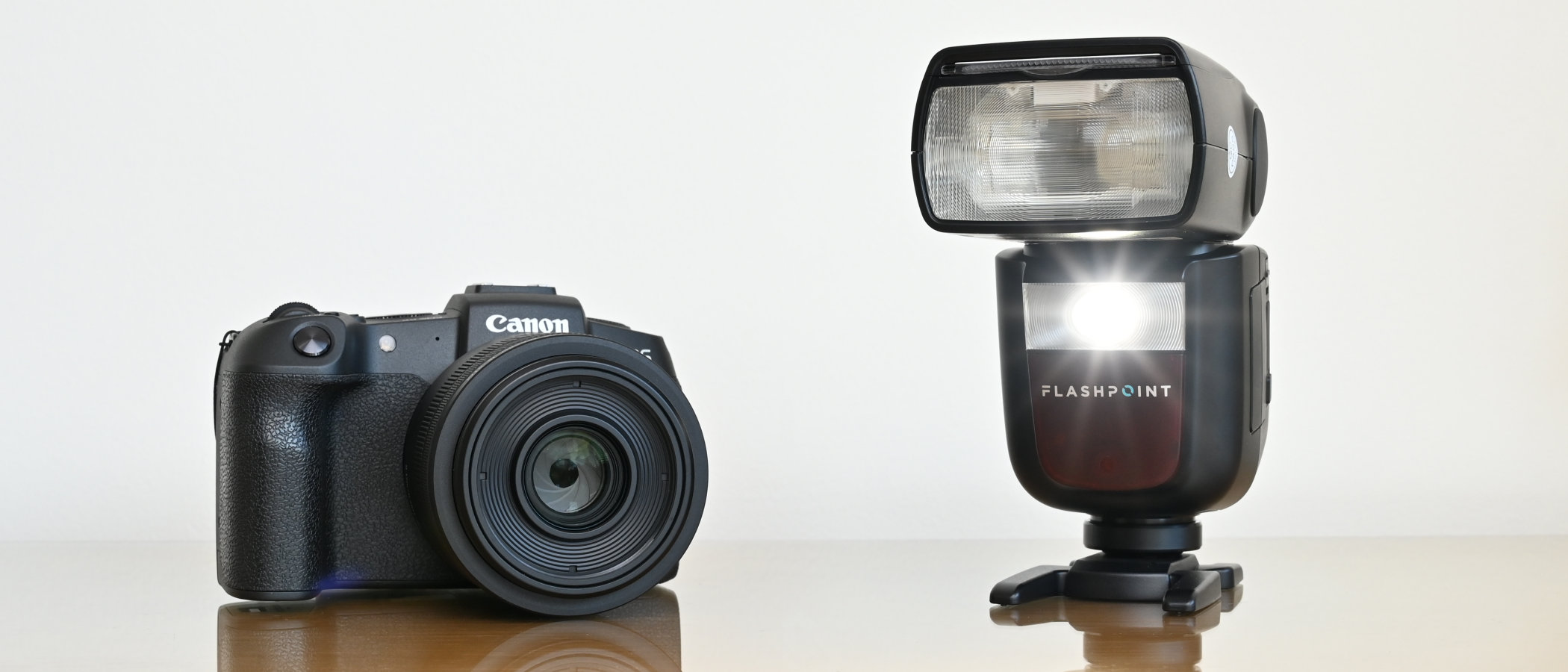Digital Camera World Verdict
A powerful flashgun available in Canon, Nikon and Sony dedicated flavors, the new edition of Adorama’s ‘exclusive’ Zoom Li-on III R2 TTL Speedlight ticks all of the boxes on a demanding photographer’s wish list, plus a few more besides. Also sold as the Godox VING V860III, the extensive feature-set includes a barrage of operating modes including high-speed sync and programmable stroboscopic output, a built-in wireless RF transceiver and plenty of flash power on tap, along with a generous motorized zoom range of 20-200mm, all driven by a rechargeable Li-ion power pack. The new version also adds a constant LED lamp, ideal for modelling and even for close-range stills and video capture. It’s a high-end piece of kit at a very competitive price.
Pros
- +
Li-ion battery pack for staying power and fast recycling
- +
10-level LED constant/modelling lamp
- +
New ‘quick switch’ for TTL/manual flash selection
Cons
- -
No diffusion dome or color filters supplied
- -
Old-fashioned interface
- -
No weather-seals
Why you can trust Digital Camera World
We expect a lot from the best flashguns nowadays. Going far above and beyond the call of simple flash duty, this new and improved model from Adorama boasts pretty much all of the high-end features you could hope for, and then some. Currently available in dedicated versions to suit Canon, Nikon and Sony cameras, it’s technically a ‘Flashpoint’ branded version of the similarly new, high-performance Godox VING V860III flashgun, which is available in all of the above dedicated options, plus additional alternatives for Fujifilm, Olympus/Panasonic and Pentax.
Read more:
The best Canon flashguns
The best Nikon flashguns
The best Sony flashguns
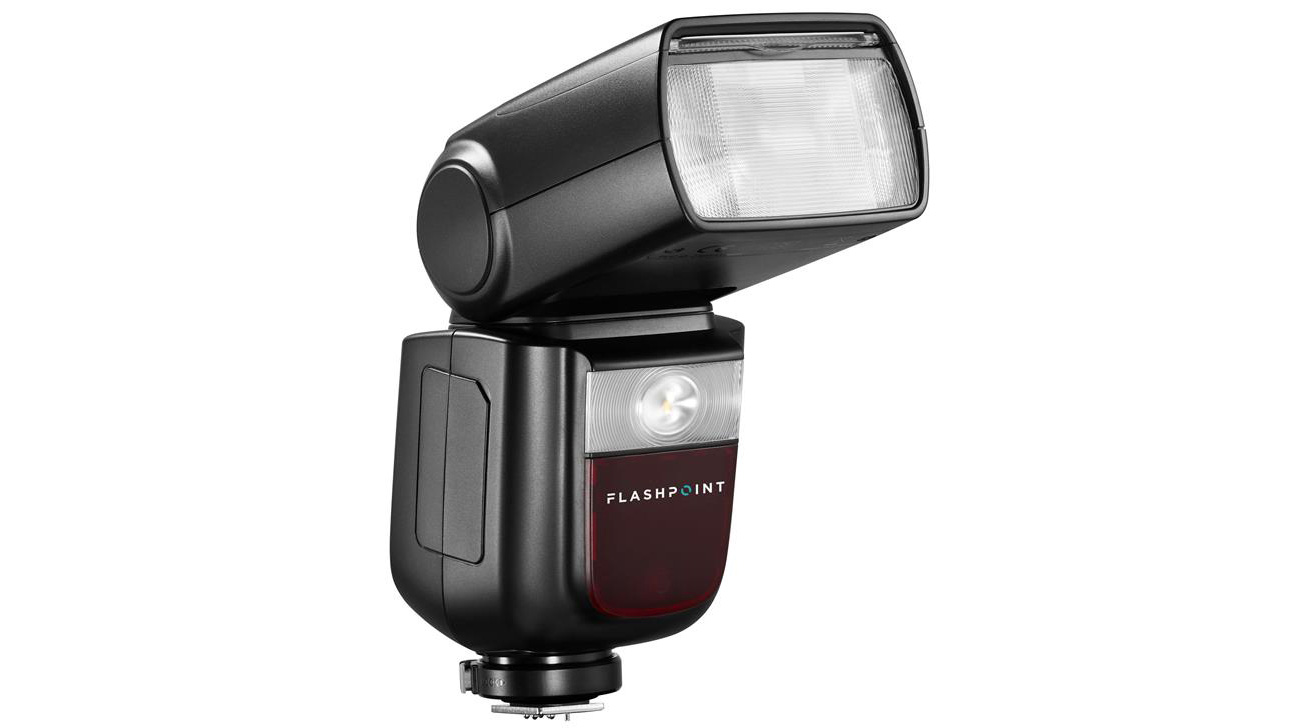
Specifications
- Dedication: Canon, Nikon, Sony
- Max output (ISO 100, metres): Gn 60/197ft
- Bounce (degrees): -7 to 120 degrees
- Swivel (left/right): 150/180 degrees
- Zoom Range: 20-200mm
- Manual Power Settings: 1/1 to 1/256
- AF-assist beam: Red lamp/LED
- Wireless: Master/Slave RF (100m/330ft)
- Additional Flash Modes: HSS, RC, Strobe
- Supplied accessories: Pouch, stand, charger
- Dimensions (WxHxD): 75x59x195mm/7.7x3.0x2.3in
- Weight (excl batteries): 530g/18.7oz
Key features
The beating heart of the Flashpoint Zoom Li-on III R2 TTL Speedlight is a rechargeable Li-ion battery. As such, the power pack slots into the body of the flashgun and the kit comes complete with a mains/USB-C charger. As with most things in life, there are pros and cons. Upsides include a super-fast recycle speed and plenty of stamina, which we’ll come to later in ‘performance’. Downsides are that you can’t simply slot in a fresh set of AA batteries if you run out of juice, while extra VB-26 Li-ion power packs are pretty pricey at $49 a pop. And if you want an additional charger too, that’ll set you back another $20. Even so, doubling up on batteries and chargers makes good sense, given that a wasted power pack takes around 3.5 hours to charge.
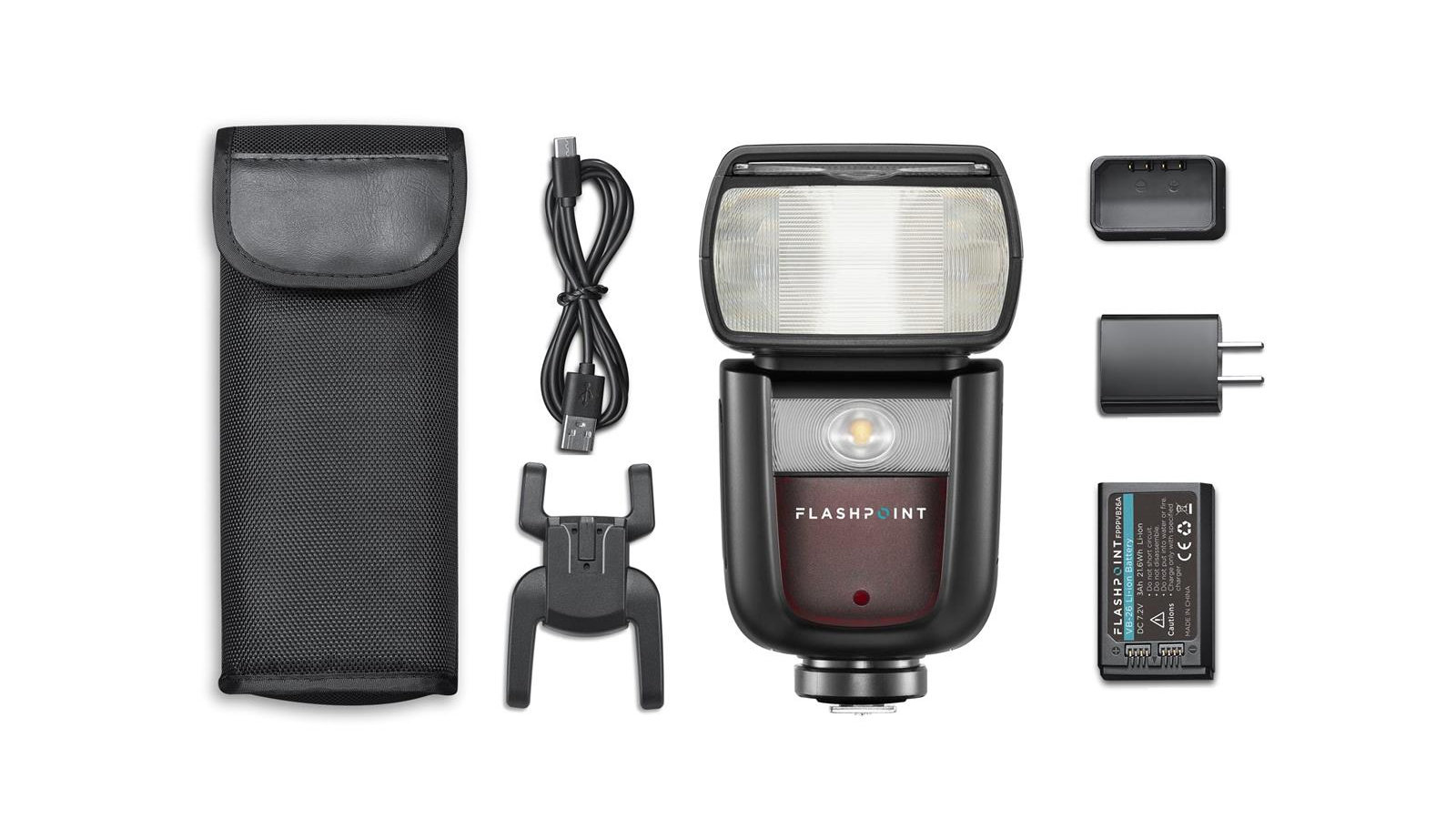
As you’d expect from any right-thinking flashgun, the head has full bounce and zoom capabilities. Pp and down tilt range is excellent, going from -7 degrees which is handy for hotshoe-mounted close-ups, to 120 degrees, venturing into rear-facing territory. There’s a full 180 degrees of lateral rotation to the right, and 150 degrees to the left. The zoom range is similarly generous, equating to 20-200mm in full-frame terms. The dedicated versions for Canon, Nikon and Sony cameras enable automatic, motorized zoom, as well as a manual option via the on-board control interface.
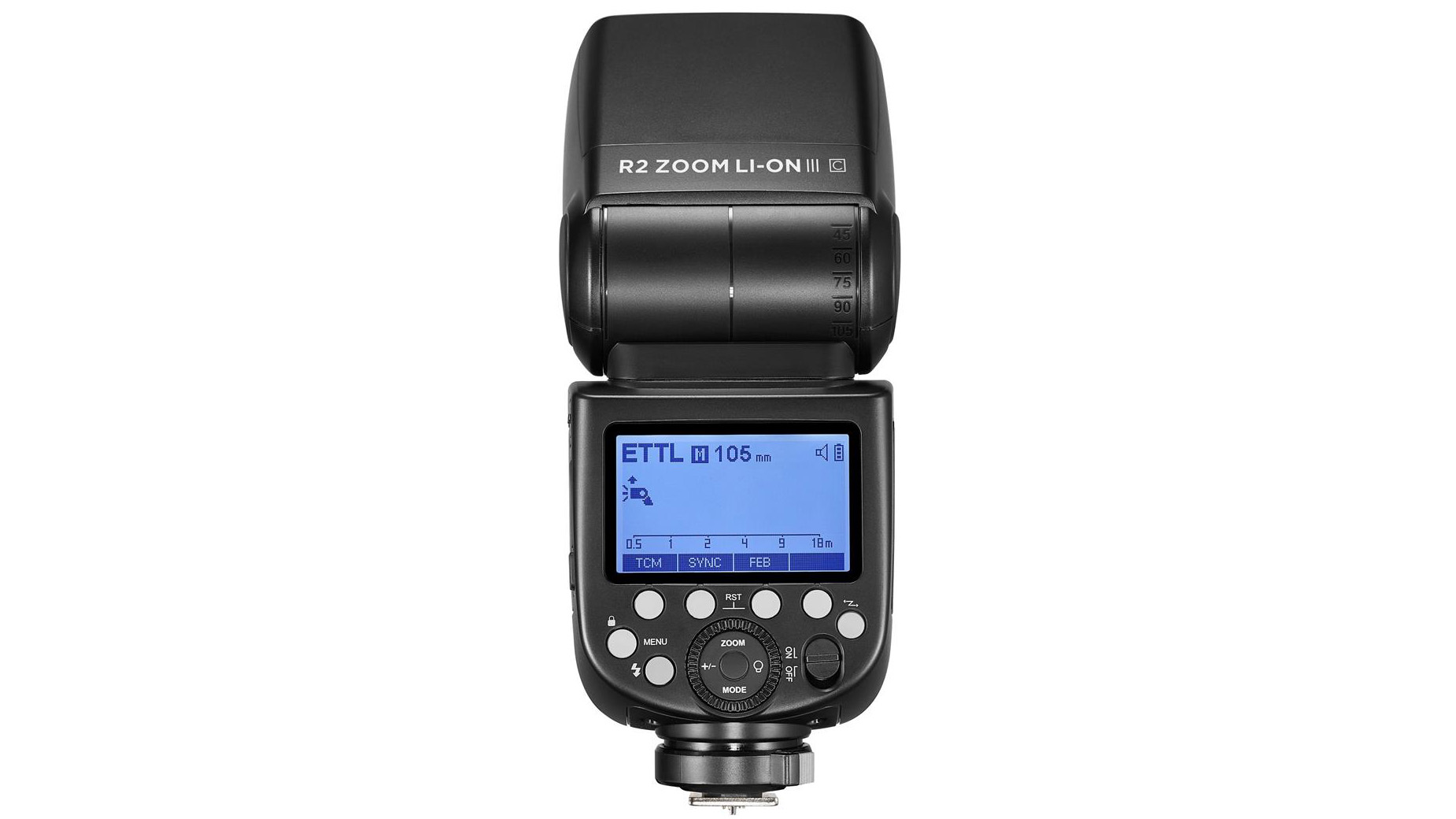
Maximum output is powerful, rated at Gn 60m/197ft (ISO 100), although this is at the longest zoom setting of 200mm, where the beam is most tightly concentrated. There’s the usual drop-off at shorter zoom settings but there’s still plenty of power under the hood. Speaking of which, the top section of the flashgun features both a pull-out wide-angle diffuser and white catchlight card, the latter being ideal for adding a little direct illumination in bounce and swivel mode.
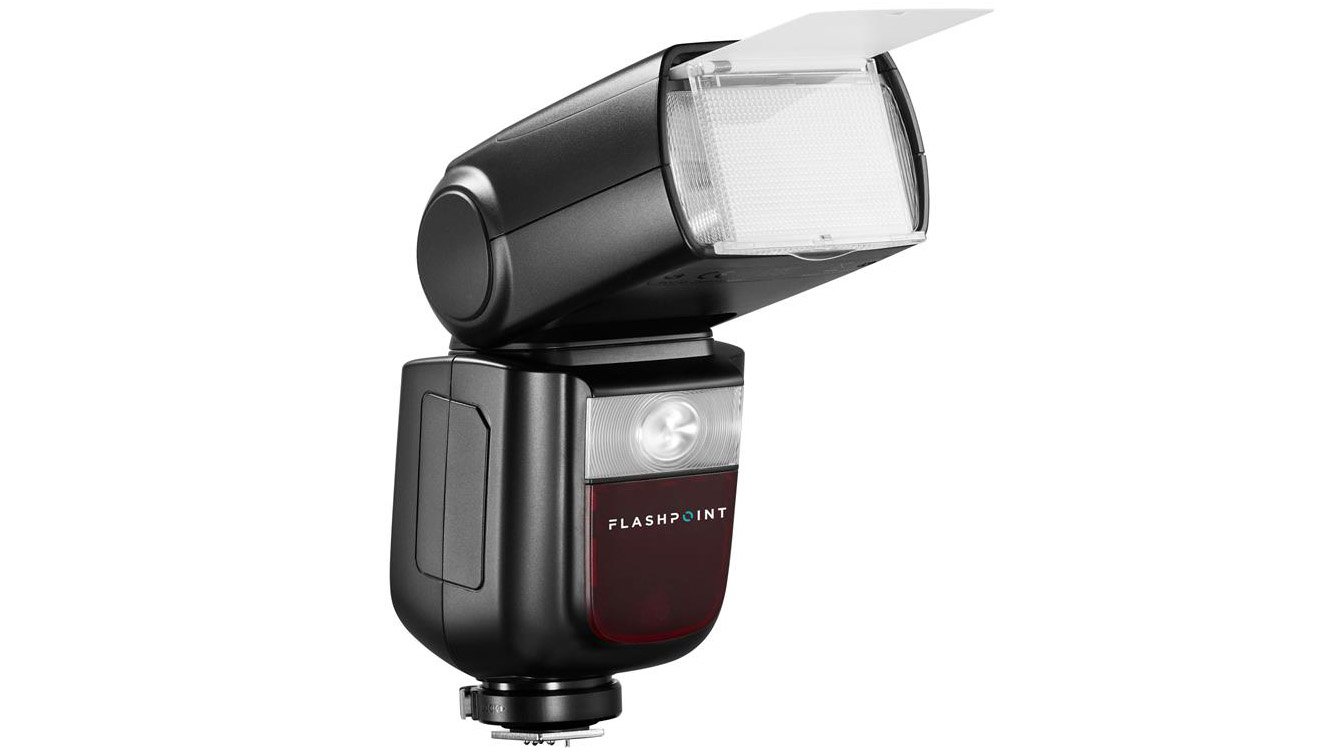
The usual TTL (Through The Lens) automatic flash metering is available in all dedicated versions of the flashgun, complete with +/-3EV of flash exposure compensation, which you can apply in 1/3-stop or full-stop steps. Flash exposure bracketing options are also on the menu, adjustable via onboard controls. Advanced flash modes include high speed sync for shutter speeds up to 1/8000th of a second, rear-curtain flash and programmable strobe. The last of these has options for setting the number and frequency of flashes during a long exposure, and is made all the more useful by the flashgun’s powerful maximum output and rapid recycling speeds.
Quite a few up-market flashguns feature a built-in wireless RF (Radio Frequency) receiver but the Flashpoint goes one better, matching some of the best on the market with an RF transceiver (transmitter and receiver). This enables the flashgun to work as a wireless master or trigger, as well as just in slave mode, with a mighty range of up to 100m/330ft. Another bonus of RF connectivity compared with a more conventional optical system is that RF can cut through obstacles and work around corners, because you don’t need a ‘line of sight’ link between master and slave.
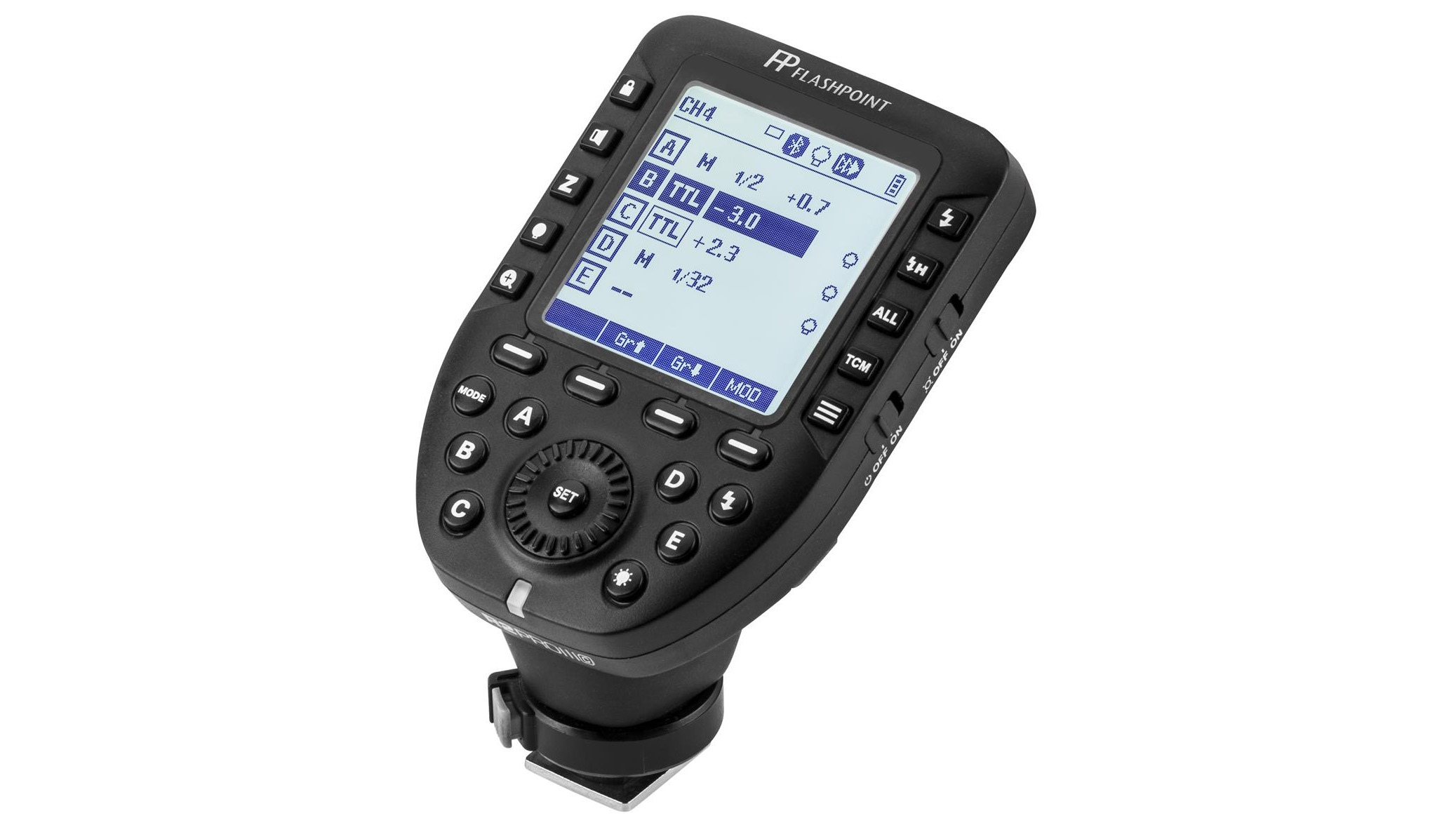
The flashgun also works particularly well off-camera, using a Flashpoint R2 Pro 2.4GHz Transmitter (XPro-N), sold separately for $69. The RF trigger/controller is available in all three Canon, Nikon and Sony dedicated options, to suit each version of the flashgun. And if you’d rather just stick to optical triggering instead of going the RF route, optical slave modes are also featured.
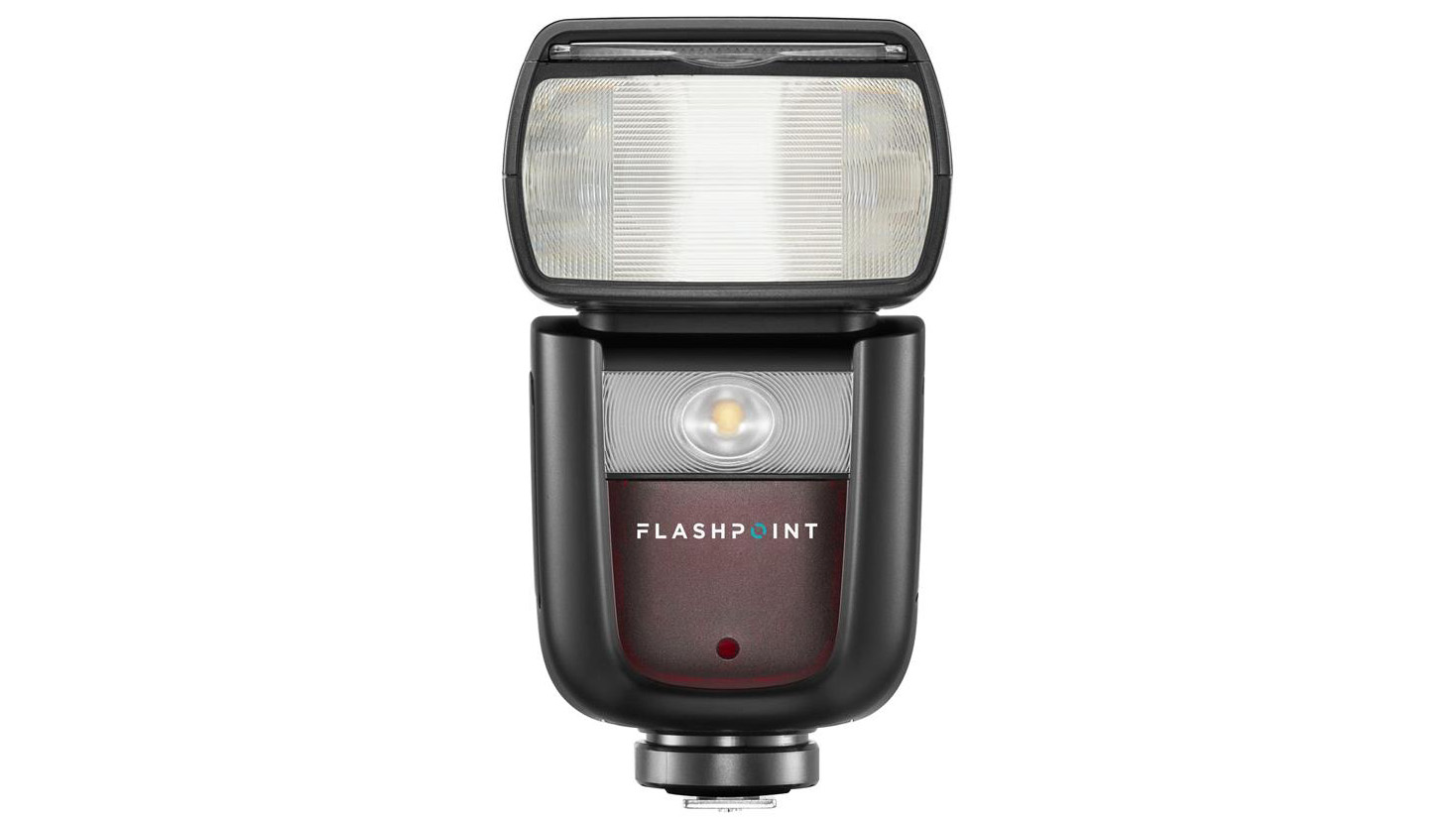
The most glaringly obvious upgrade over the previous model of the flashgun is the addition of a bright LED lamp, built into the front section of the main body. With two switchable operating modes (via the onboard menu), so you can use it as a constant lamp for close-up stills and video, or as a modelling lamp, where it switches off automatically during camera exposures. In both cases, you can adjust the intensity of the lamp in ten steps. Considering that the red autofocus-assist grid is generally disabled with mirrorless cameras that can’t ‘see’ it anyway, using the LED as a modelling lamp can also be useful for helping the camera autofocus in really dark conditions.
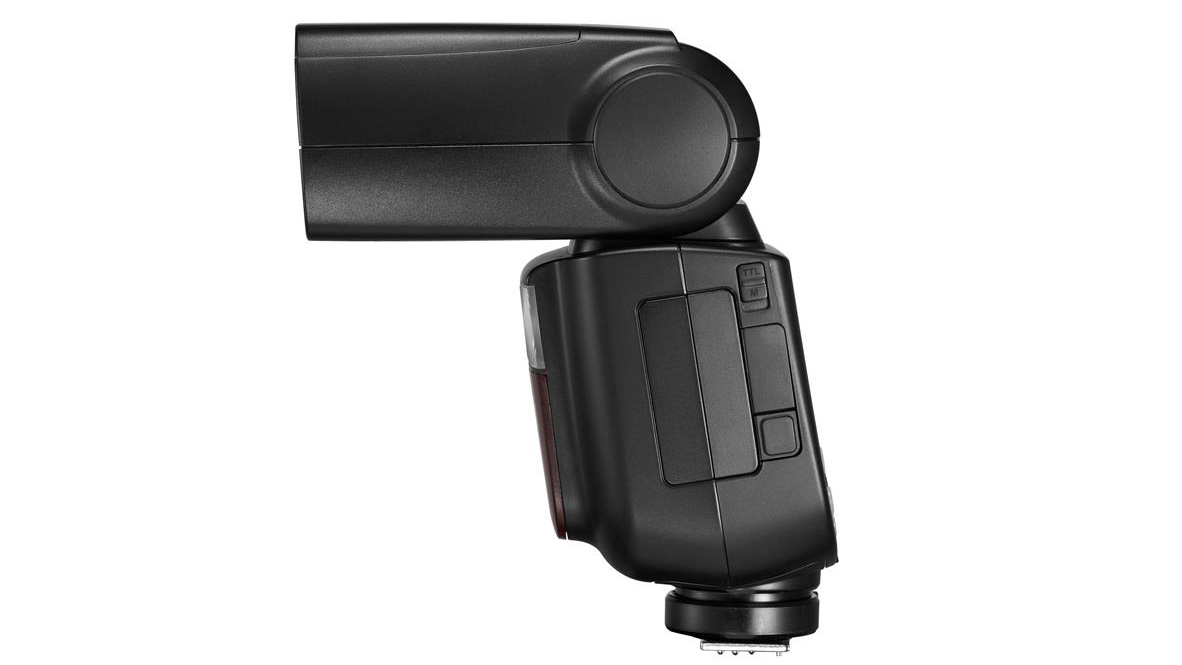
Other improvements in the new flashgun include the addition of a dedicated TTL/M switch on the side of the main body, for easily swapping between automatic and manual flash output power modes. A pushbutton/sliding quick-release hotshoe lock is also added, replacing the more cumbersome locking screw of the previous model.
Build and handling
Build quality feels tough and solid throughout, based on high-quality plastics and a metal hotshoe plate. However, no weather-seals are featured which can be a concern considering the close proximity of the battery pack connections to the side panel of the flashgun. The design features a cut-out section, like a tunnel, that passes right through the main body of the flashgun from one side to the other. The battery slots into this with no additional, external cover or protective ‘door’ at either end.
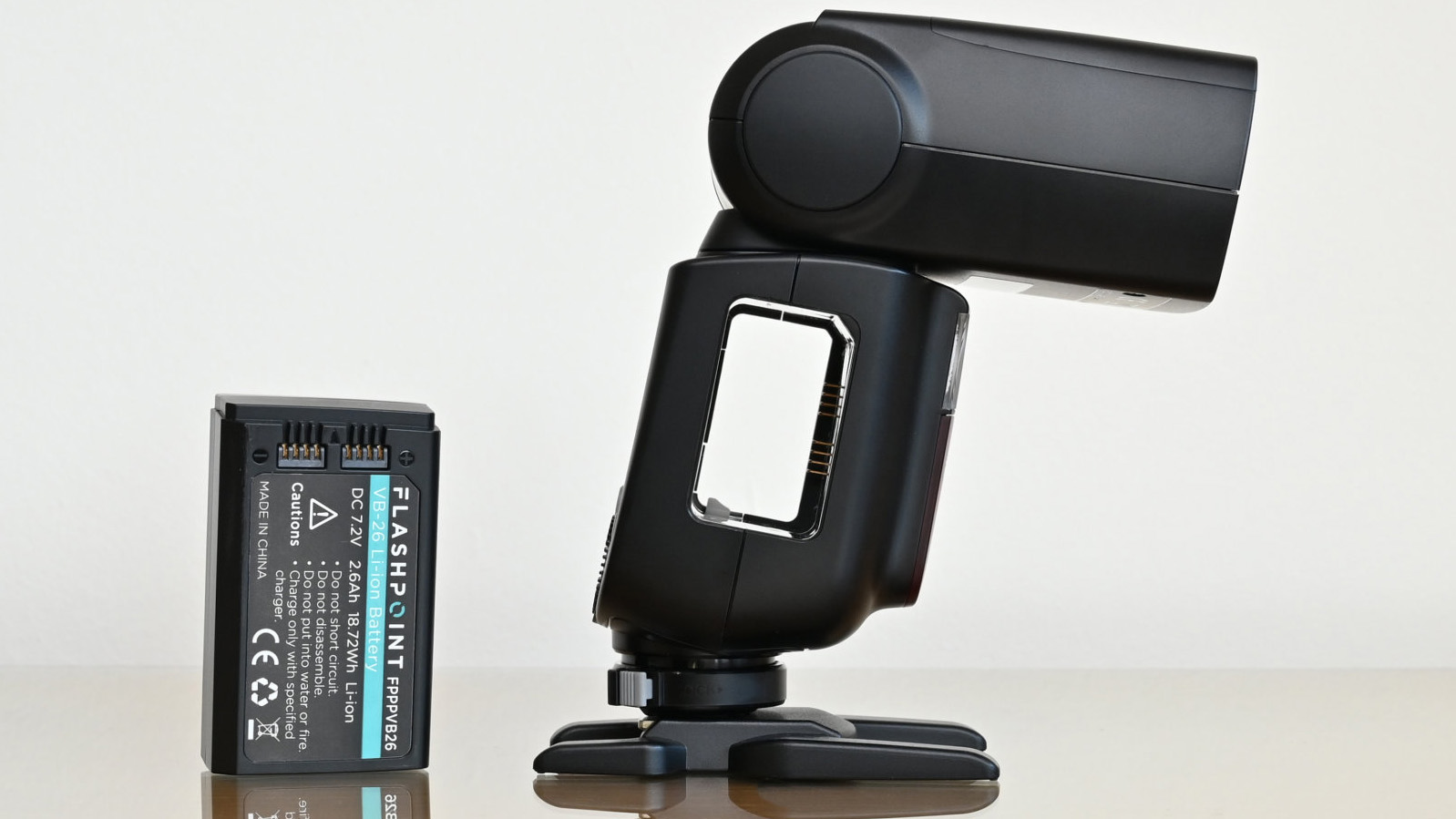
The new quick-release lock is a definite improvement and the TTL/M switch keeps things simple. The same can’t be said for the rest of the interface, which is based on the time-honored provision of a mono LCD screen and a row of four context-sensitive pushbuttons. Compared with some of the latest own-brand flashguns from camera manufacturers, the interface feels a little dated and long-winded. On the plus side, an additional pushbutton is on hand for access to the custom functions menu, which doubles as a ‘settings lock’ button if you long-press it.
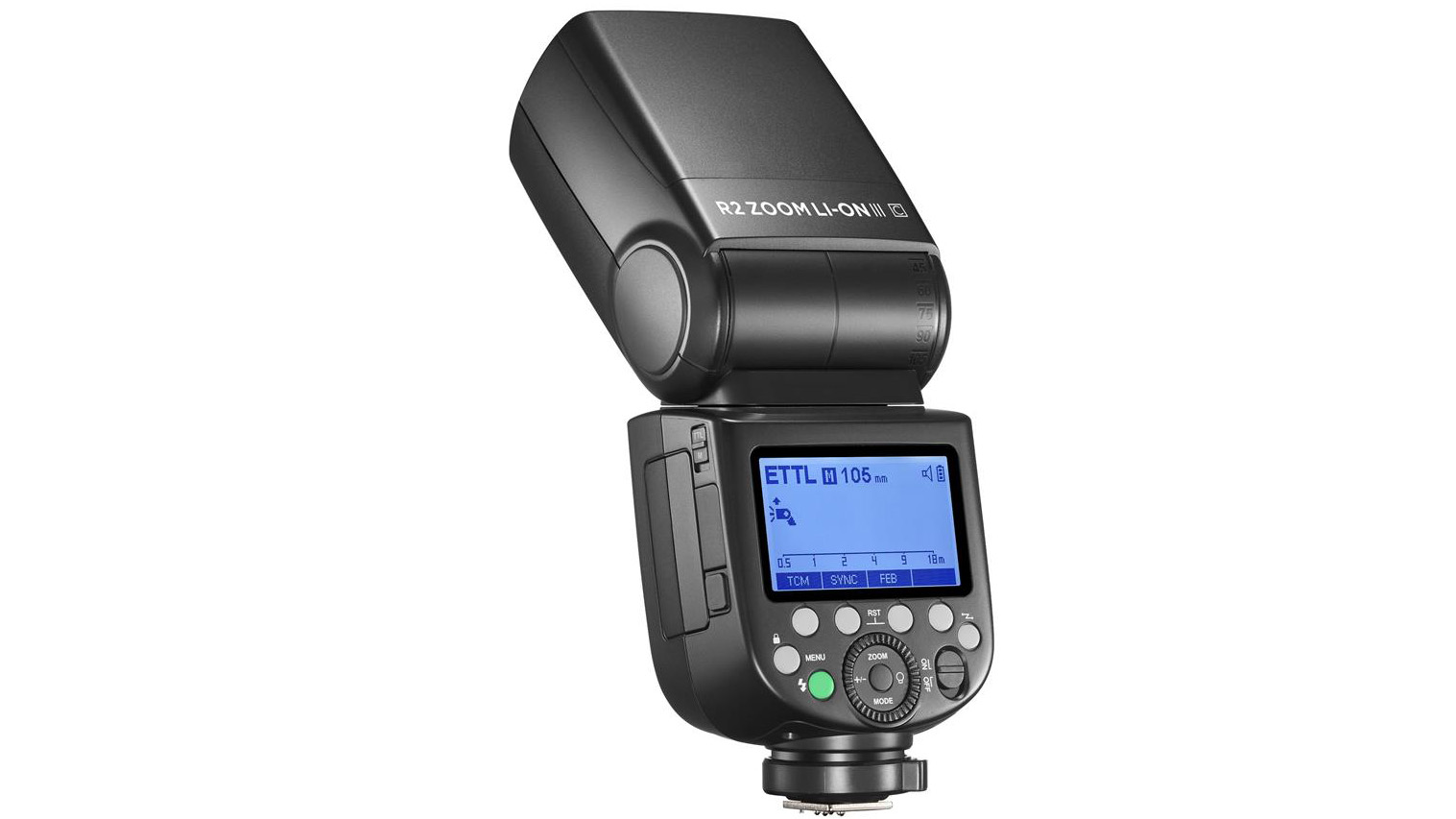
There’s also a dedicated wireless master/slave button and, to help you keep tabs on status, the LCD backlight switches from blue to orange when slave mode is selected. At the bottom of the control cluster is a 4-way pad for +/- flash compensation, zoom, LED control and flash mode selection. This doubles as a rotary dial for adjusting each of the settings, with a ‘set’ button at the center.
Performance
In our tests, the Flashpoint performed admirably in terms of maximum output throughout the zoom range, level-pegging or beating some of the most powerful own-brand flashguns on the market from camera manufacturers. As an extra bonus, the minimum power output is very restrained, equating to 1/256th of maximum power. This can be a big bonus when you want to add a touch of subtle fill flash while preserving the effect of ambient lighting, anytime you’re shooting in very low lighting levels, either indoors or out at night.
The Canon-dedicated edition that we tested returned highly accurate and consistent TTL flash metering, while the high speed sync, rear curtain and programmable strobe modes all worked flawlessly. The LED featured in the new edition is well worth having, both as a modelling/autofocus lamp and for close-up stills and movie capture. No CRI (Color Rendering Index) is quoted for the lamp, but color rendition proved very passable in our tests.
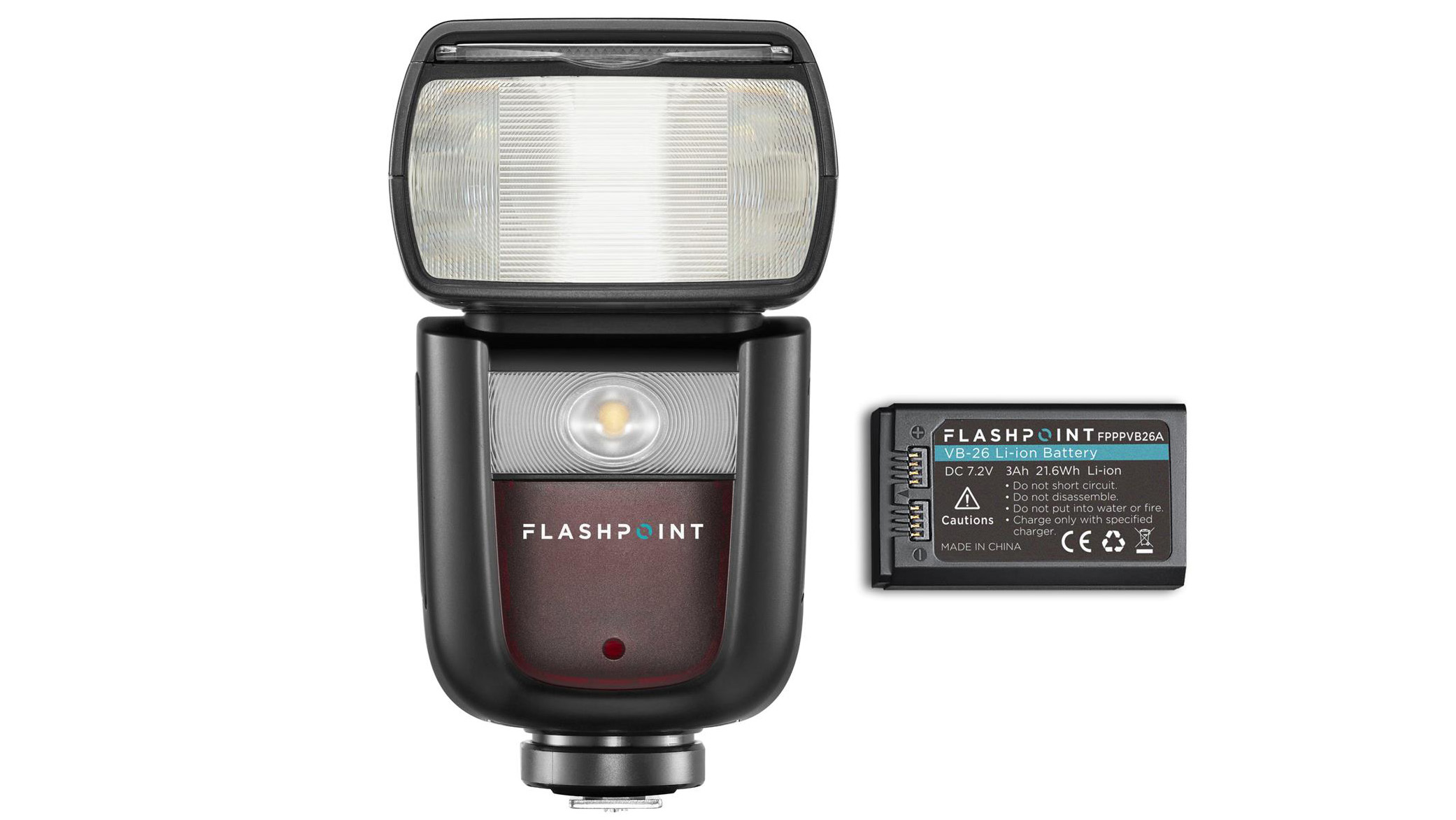
As we mentioned at the start, stamina is a big plus point of flashguns that use a rechargeable Li-ion battery, in preference to conventional AA cells. The new edition of the Flashpoint is pretty impressive in this respect, delivering up to 450 full-power flashes from a fully charged power pack. Naturally, many more flashes are available at lower-power settings. Curiously though, while Adorama claims that the new edition uses an ‘upgraded Li-ion battery with a large capacity’ the total number from the previous model was quoted as being significantly higher, at 650 full-power flashes.
There’s certainly no disappointment when it comes to recycling speed. In our tests, we found recycling to be instantaneous at all power settings from 1/256th right up to 1/4 of full power. Recycling speed is still very fast at high-power settings, measuring 0.7 seconds for 1/2 power and 1.5 seconds after a full-power flash. That’s around twice as fast as most top-end, pro-grade flashguns that run on AA batteries.
Lab data
Flash power
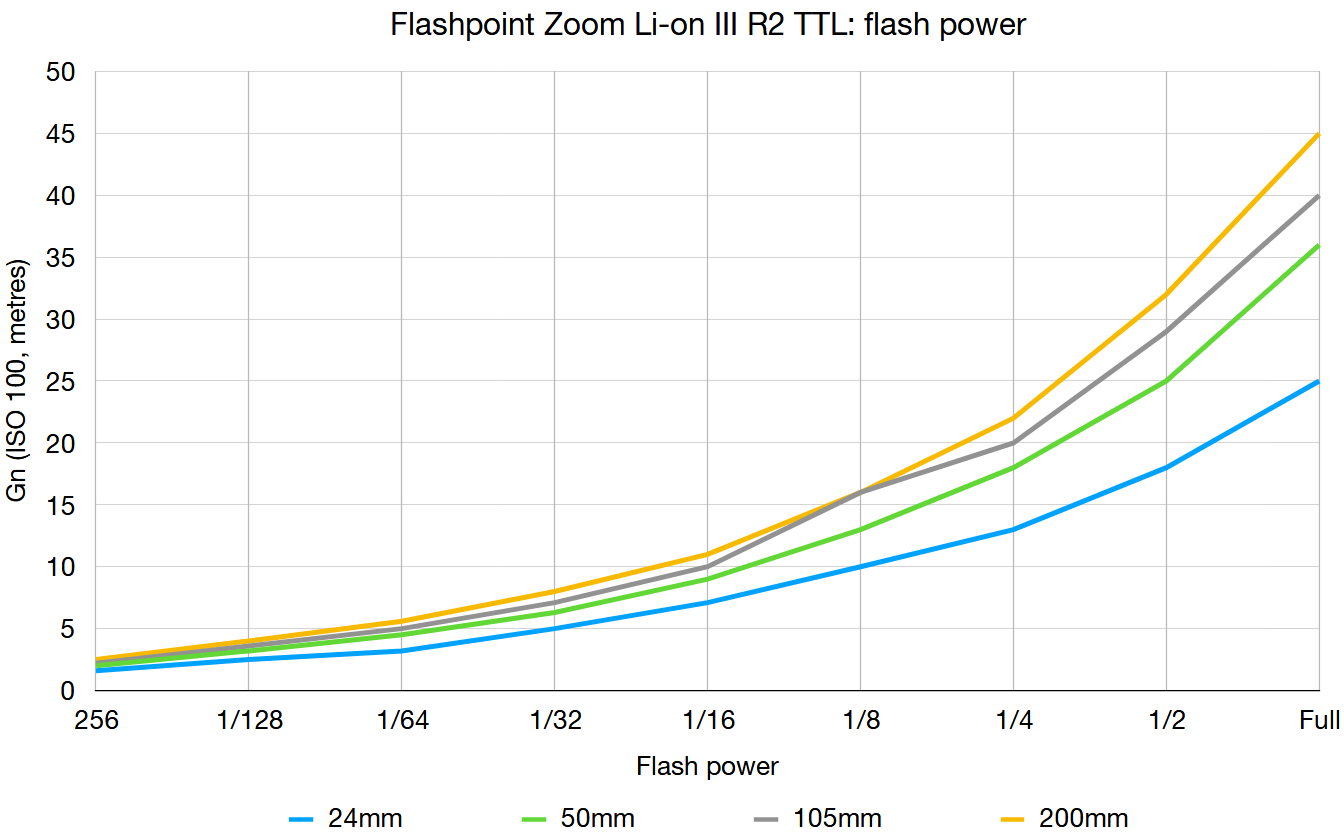
For maximum power output, the Flashpoint rivals some of the most powerful pro-grade flashguns on the market, including the Canon 600EX II-RT and Nikon SB-5000. At the bottom end of the scale, the 1/256th power setting enables very subtle lighting with good, consistent color rendition - something that’s difficult to achieve with IGBT (insulated-gate bipolar transistor) flashgun technology.
Recycle speed
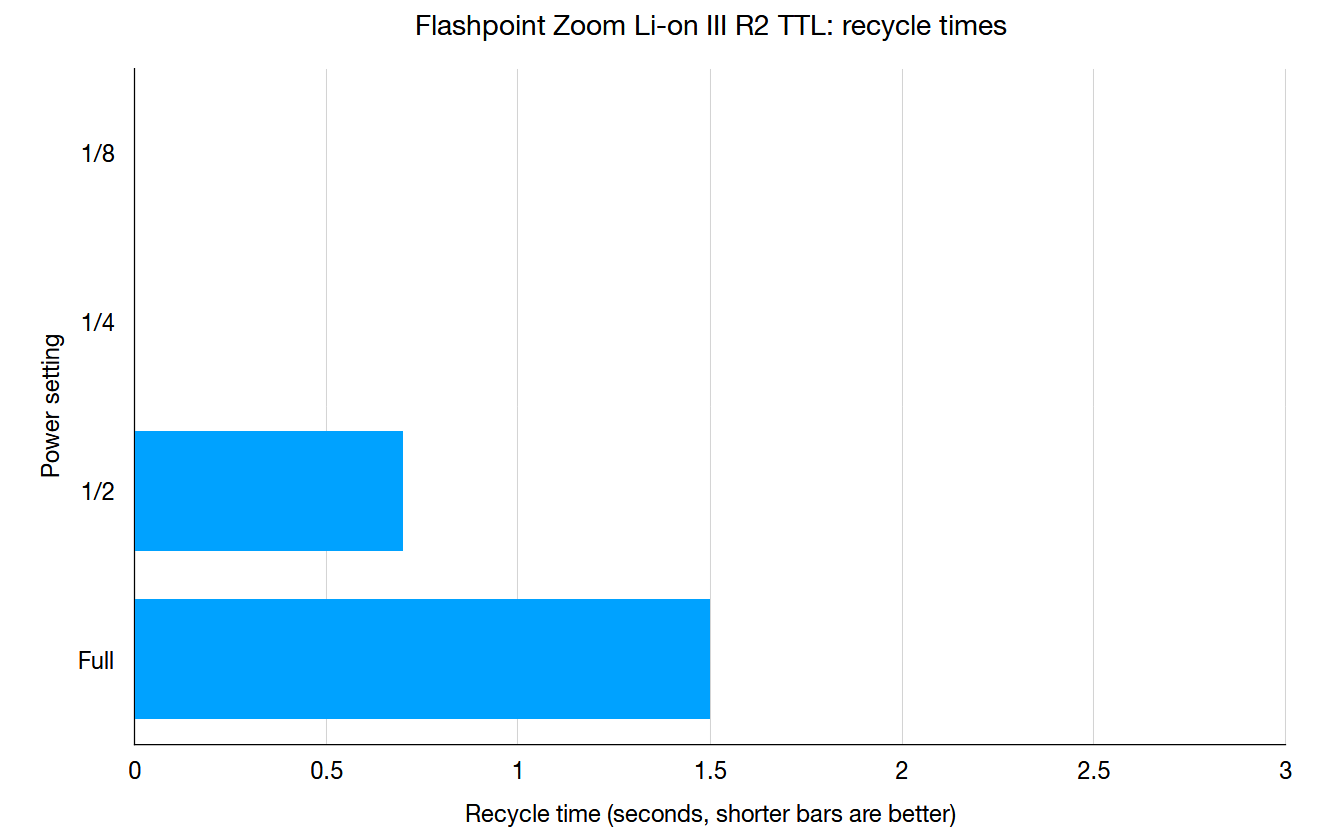
There’s no need to worry about your creative flow being interrupted by lengthy waits for recycling flashgun. Thanks to the use of a Li-ion battery, speeds proved instantaneous in our tests, all the way from 1/256th to 1/4 power settings, and are still very quick in the 1/2 to full power range, where they’re about twice as fast as from most top-end flashguns that run on AA batteries.
TTL accuracy
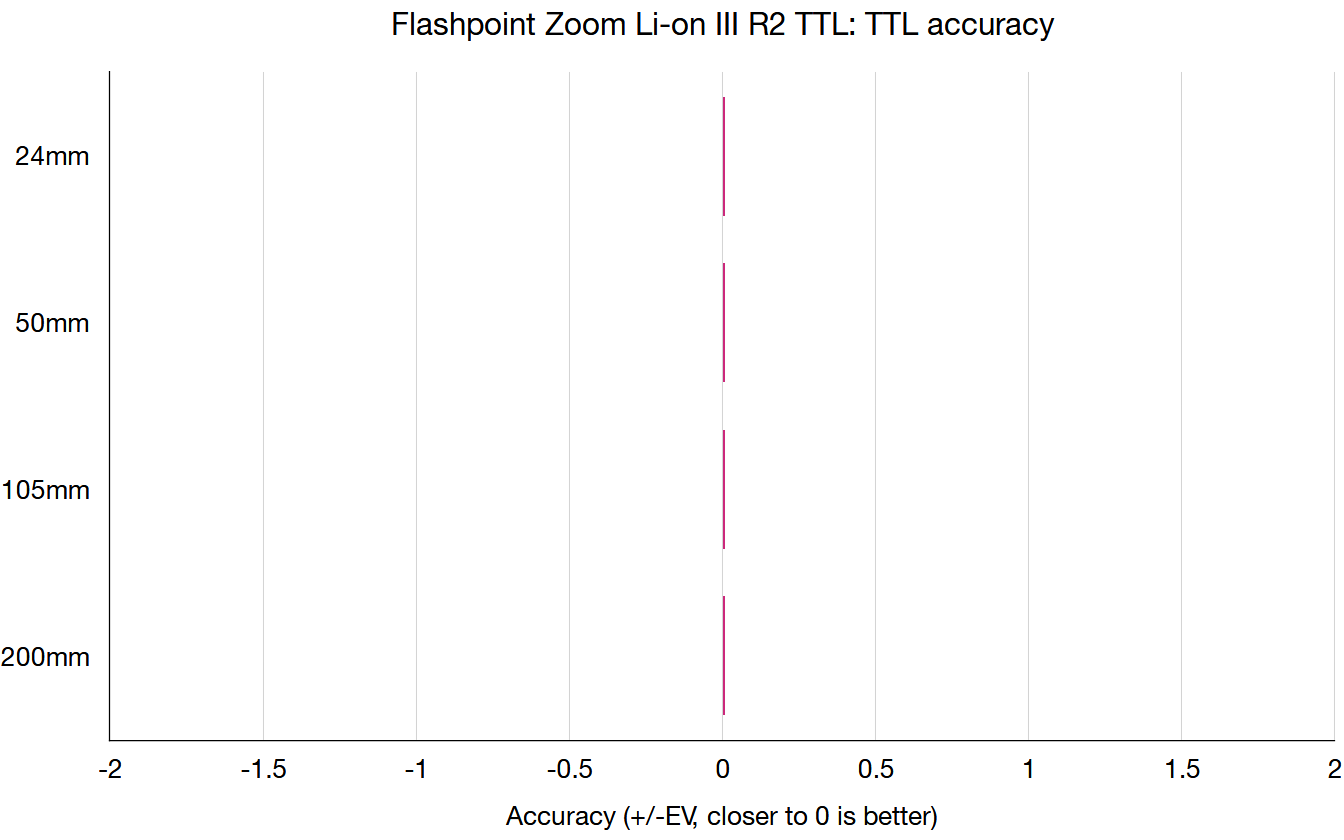
Nothing to see here, but that's a good thing! The Canon-dedicated version of the flashgun that we tested gave consistently accurate TTL metering throughout the entire zoom range, for a wide variety of shooting distances and subject matter.
Verdict
Full of tricks, the Flashpoint Zoom Li-on III R2 TTL Speedlight is a worthy upgrade over the previous edition of Adorama’s own-brand flashgun. The additions of an LED lamp, quick-release lock and TTL/M flash exposure switch all add to the attraction, enhancing versatility and ease of use. Building on the older model’s powerful feature base, which included a wireless RF transceiver, Li-ion battery pack, and extensive ranges of both flash output power and zoom length, the Mark III edition is an excellent piece of kit and great value at the price. The only slight niggles are that the control interface feels rather dated and that there are no weather-seals.
Read more:
The best flash diffusers, softboxes and modifiers for your speedlight
Matthew Richards is a photographer and journalist who has spent years using and reviewing all manner of photo gear. He is Digital Camera World's principal lens reviewer – and has tested more primes and zooms than most people have had hot dinners!
His expertise with equipment doesn’t end there, though. He is also an encyclopedia when it comes to all manner of cameras, camera holsters and bags, flashguns, tripods and heads, printers, papers and inks, and just about anything imaging-related.
In an earlier life he was a broadcast engineer at the BBC, as well as a former editor of PC Guide.
